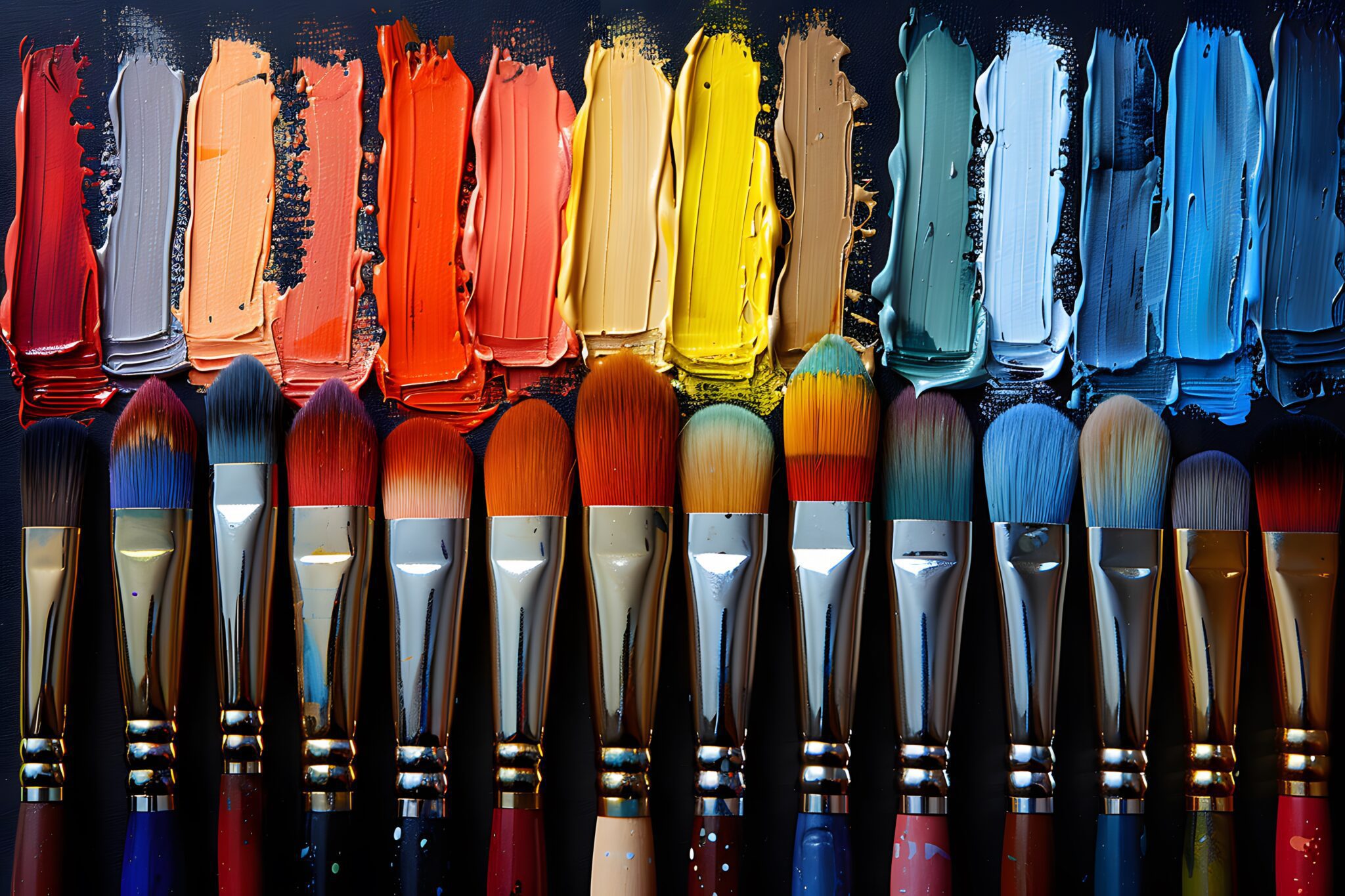In the world of acrylic painting, artists often gravitate towards familiar tools like flat, round, and filbert brushes. However, exploring uncommon brush types can open up exciting avenues for creativity and innovation. These unique brushes can help you achieve distinctive textures, patterns, and effects that elevate your artwork beyond the typical. This guide will delve into various uncommon brushes, their special applications, and how they can enhance your acrylic art practice through experimentation.
1. Types of Uncommon Brushes and Their Applications
A. Rake Brush
Characteristics:
- A rake brush has bristles that are cut to varying lengths, creating a comb-like shape.
Best Uses:
- Texture Creation: Ideal for creating grass, fur, or any textured surface. The varying lengths of the bristles allow for unpredictable strokes that mimic natural textures.
- Layering Effects: Use the rake brush to lightly scrape paint across the surface, producing unique patterns and effects. It works well for layering colors in abstract art.
B. Fan Brush
Characteristics:
- A fan brush features bristles arranged in a fanned-out shape, which can create multiples of strokes simultaneously.
Best Uses:
- Blending and Soft Textures: Excellent for creating soft textures, such as clouds and foliage. The fan shape can also blend colors seamlessly.
- Stippling Effects: Use it to create stippling effects for flowers or foliage to add life and dimension to landscapes.
C. Hake Brush
Characteristics:
- A hake brush has soft, wide, and flat bristles, often made from goat hair or a synthetic alternative.
Best Uses:
- Wash Application: Perfect for applying washes of color over large areas. It holds a substantial amount of water and paint, allowing for smooth and even coverage.
- Soft Blending: Great for blending large areas, such as skies and backgrounds, without harsh lines or strokes.
D. Toothbrush
Characteristics:
- While not traditionally considered an artist’s brush, a toothbrush can be repurposed for creative effects.
Best Uses:
- Splatter Effects: Dip the toothbrush in paint and flick or scrub it over the canvas for an exciting splatter effect, adding dynamism to your work.
- Texture and Layering: Use it to create gentle textures or marks in the paint, useful in both abstract and landscape painting.
2. Experimental Techniques Using Uncommon Brushes
A. Rake Brush Techniques
- Creating Texture: Apply a layer of paint and, while it’s still wet, use the rake brush to pull through the paint, creating grassy or fur-like textures.
- Layered Patterns: Experiment with pulling different colors using the rake brush to create layered effects in abstract paintings or textured landscapes.
B. Fan Brush Techniques
- Floral Effects: Use the fan brush to create flower petals by making quick taps to build up color. This technique offers a quick way to create clusters of flowers.
- Cloud Formation: Lightly drag the fan brush over wet paint to create soft and fluffy cloud shapes, blending shades of blue and white seamlessly.
C. Hake Brush Techniques
- Uniform Washes: Use the hake brush to apply washes of color evenly across the canvas, ideal for creating backgrounds.
- Wide Blending: To blend two colors, apply one color with the hake brush, and before it dries, use the clean side of the brush to blend in the second color, creating smooth transitions.
D. Toothbrush Techniques
- Dynamic Backgrounds: Flicking paint from a toothbrush can add excitement and movement to backgrounds or abstract pieces.
- Fine Textures and Patterns: Use different colors to create dots or fine textures across the canvas, which can mimic elements like starry skies or water splashes.
3. Getting Started with Uncommon Brushes
- Choose Your Brushes: Start by selecting one or two uncommon brushes that interest you. Rake and fan brushes are excellent starting points due to their versatility.
- Experiment on Scrap Paper: Before applying these techniques to your canvas, practice on scrap paper or a test canvas to understand how the brushes interact with acrylic paint.
- Combine Techniques: Don’t shy away from mixing brushes in a single piece. Combine a rake brush for texture and a fan brush for highlights to see how they complement each other.
- Explore Color Mixing: Try mixing your paints directly on the canvas with these brushes, especially the rake or fan brush, to see how textures and effects emerge.
- Document Your Findings: Keep a journal of what worked and what didn’t. Take notes on techniques, colors used, and outcomes to refine your artistic process over time.
4. Conclusion
Uncommon brushes can significantly expand your artistic repertoire and lead to exciting new techniques in acrylic painting. By exploring tools like rake brushes, fan brushes, hake brushes, and even toothbrushes, you can experiment with texture, detail, and effects that bring your artwork to life. Embrace the opportunity to step out of your comfort zone, and let these brushes inspire your creativity as you redefine your artistic style.
Discover a variety of uncommon brushes and essential art supplies at urartstudio.com to propel your acrylic painting adventures forward!
Be sure to visit our online store at https://urartstudio.com/shop/ for a variety of art supplies and tools. Additionally, check out valuable painting tips at urartstudio.com/painting-tips/ and our step-by-step painting instructions at https://urartstudio.com/step-by-step-painting-instructions/ to further enhance your skills.
Keywords: uncommon brushes, acrylic painting techniques, texture creation, art experimentation.
#UncommonBrushes #AcrylicArt #ExperimentalTechniques #ArtSupplies #BrushTechniques



Leave a Reply
You must be logged in to post a comment.